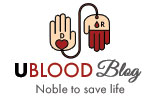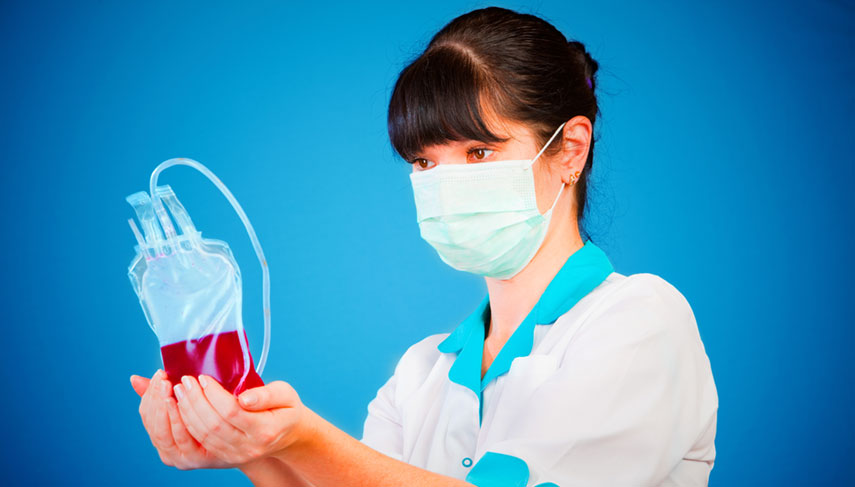A Mighty Challenge: Blood Crisis in Corona Times
All it takes is 350 ml blood to save a life. Whether it is red blood cells, platelets or other components; human blood is life giving. Ask anybody who has been through a challenging health crisis about the importance of blood. Be it a road accident, an emergency surgery, a sudden gastrointestinal bleed or other situations. We suddenly become aware of how critical blood donation is in such situations. If we do not get the blood in time we may succumb to the crisis. India has seen several instances where a patient died due to lack of access to life saving blood at the right time. Yes, timing is crucial when blood is required. Waiting can be fatal.
Human blood cannot be made artificially in a lab and the only source of blood is human donations. We depend on human generosity and kindness in coming forward to save lives with blood donations. A large country like India is perennially short of blood. We have patients with chronic ailments like thalassemia, sickle cell anemia, hemophilia, cancers, other anemias, kidney disorders or liver diseases who depend on regular blood donations to carry on with life. Every step in life depends on the availability of timely life saving blood. A child/adult with thalassemia requires 2-4 units of blood each month for transfusion. Most blood banks across India depend on factories, companies and other midsize to large organizations where they arrange blood donation camps and ensure a steady supply of blood. This model worked fine so far.
Enter 2020 and the COVID19 crisis, every single aspect of life was disrupted including the corporate model of blood donations. Suddenly most blood banks in India ran dry as there were no more blood donation camps. Factories and companies closed during lockdown and employees started working from home. So how would blood donation camps be possible in a situation where a virus loomed large and presented the danger of spreading in communities especially at gatherings. State governments issued orders that group gatherings would not be permitted. This hit the concept of blood donation camps and in turn badly impacted a large chunk of patients depending on blood banks for chronic blood requirements. Our city Bangalore saw thalassemia patients left high and dry with nowhere to go for blood. Suddenly everyone was left alone to arrange for their own donors. What model would work in this situation?
In the virus crisis and lockdown, the concept of the “community” became stronger and more important for chronic patients seeking blood. People put out requests in apartment complexes and managed to organize a small number of donations ranging from 15-25 units. Small mercies to tide over the crisis.
Suddenly it also hit us all that there must be a way of reaching out to donor databases and raising individual requests when needed. There must be a way of quickly accessing donor lists and arranging blood. We saw requests for blood in various whatsapp groups, facebook, twitter, instagram and other social media. But there must be an easier and more streamlined manner of requesting for blood. After all, putting requests on social media is a hit or miss. We don’t really know if there are donors around and if at all they will respond to the call for blood.
What is a better way then? Most of us from the thalassemia community talked amongst ourselves that a digital app linked to a donor database would be the most helpful for individuals. A blood donation app would take our personal details and request for the particular blood group, number of donors required and connect us to the nearest available donors (along with details of when they last donated, their current availability and willingness to come forward). We would also have the option of organizing a cab service for such donors. This would take care of even emergency requirements for immediate blood donations. The app would give the option of storing personal details of chronic patients like those with thalassemia requiring regular blood transfusions. This can save the effort of entering details each time we make a request.
Clearly, our city Bangalore is in need of such an app to address our blood needs and do a direct connect to donors. This will address a large part of the problem and ensure that patients do not end up running from pillar to post for blood needs. This will also make it easier for donors to actually see where their blood goes and who it helps. An app is also a good way to maintain confidentiality of those requiring blood as well as those donating blood. An important point to consider in data privacy.
One may raise the point that an app will not serve the poorest sections of society who have no access to smartphones or internet required for using digital tools. Understandably the digital divide is a harsh reality and to take care of this section of the population we need other options like phone-in requests or on-the-ground support.
A 360-degree solution is needed to address the blood crisis in India during such challenging times where people fear even going out of their homes. Yet we have seen the heroism of blood donors who have donated in the worst of times. Leaving aside fears and risks, such warriors came forward to save lives. Words are insufficient to thank the blood heroes and heroines who donated fearlessly.
The thalassemia community in Bangalore rallied around the COVID19 crisis and raised the issue of blood crisis in mainstream and social media. We used various options to deal with our blood transfusion requirements ranging from organizing small community camps, using online donor databases and calling individual donors, tapping into our own family and friends network and of course social media requests. What will make our lives easier in future is a verified app for those who use smartphones and the internet with validated donor databases. So that every blood transfusion is not just a needle prick but a mental hassle with organizing donors and running around.
We look forward to supporting any such venture that will create digital tools to solve our blood woes which we foresee will last for at least the next year or two or so until COVID19 exits the country.
Dr. Namitha A Kumar (PhD)
Head – Advocacy and Outreach, Open Platform for Orphan Diseases
Thalassemia community advocate, Bangalore

